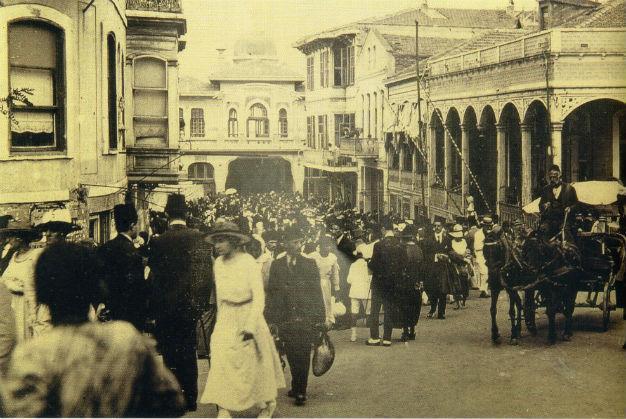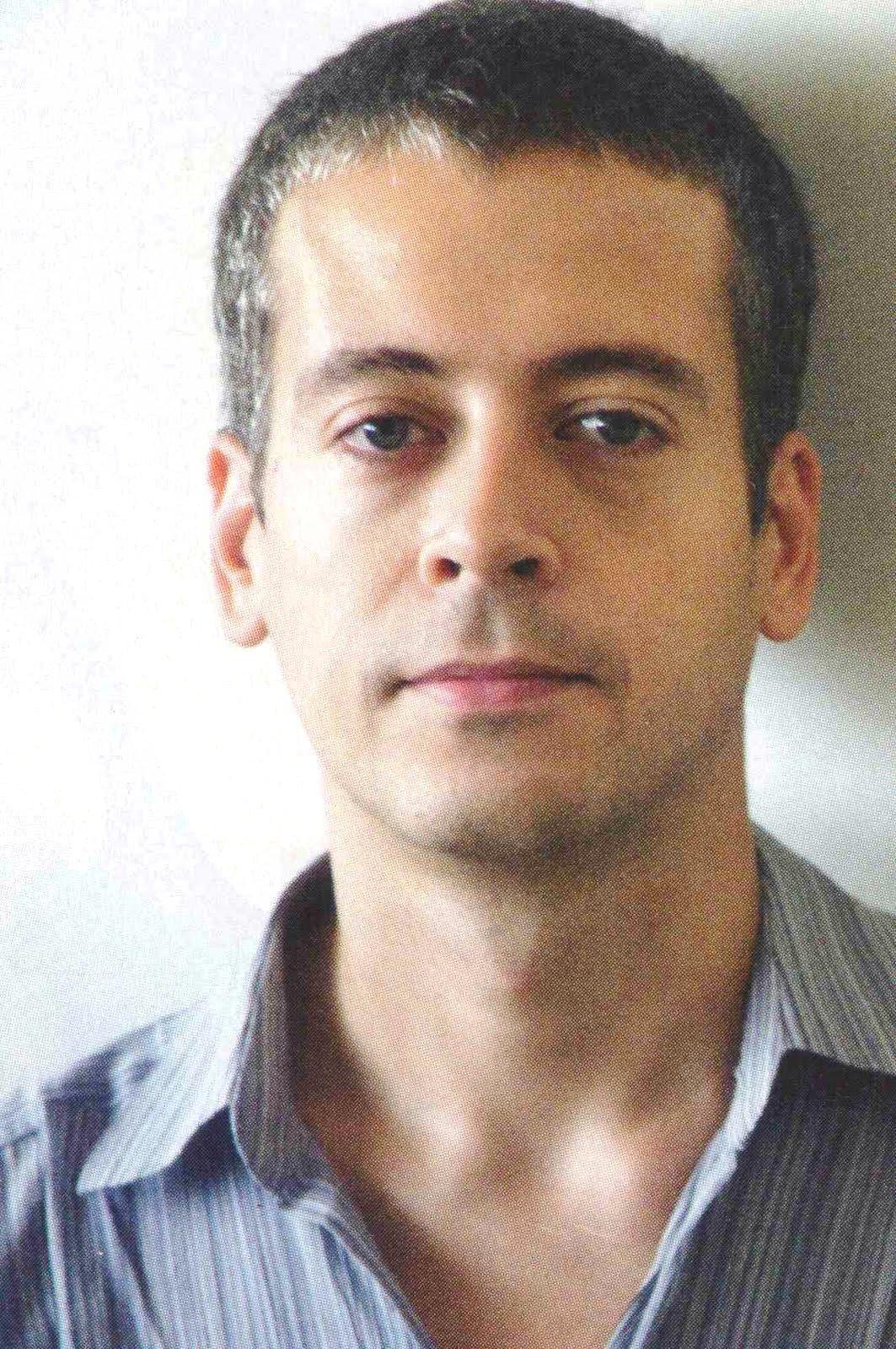INTERVIEW: Author Kaya Genç talks centuries of Istanbul writing
William Armstrong - william.armstrong@hdn.com.tr
 Istanbul has always been a rich source of inspiration and a new book (reviewed in HDN here) gives a taste of writing about the city by classic names including Mark Twain, Ernest Hemingway, and Lady Mary Wortley Montagu.
Istanbul has always been a rich source of inspiration and a new book (reviewed in HDN here) gives a taste of writing about the city by classic names including Mark Twain, Ernest Hemingway, and Lady Mary Wortley Montagu.Kaya Genç, the editor of “An Istanbul Anthology,” spoke to the Hürriyet Daily News about centuries of literary reflections on the city, the writers he included in the selection, and those he had to leave out.
Istanbul is constantly changing, but what are some of the recurring themes that visitors have written about Istanbul over the years?
There has always been a kind of feeling of mystery - a feeling that there’s a will over Istanbul that the foreign traveler could go beneath to discover something. There is a sense of discovery in most writings in the book.
One is by Arthur Conan Doyle, so there is a kind of Sherlockian quality to it. This power and how it fascinates the Western observer is a continuing theme in many of these writings.
I also picked some writings from the 16th and 17th centuries. Of course the concerns here were very different; as the ages change the observers’ point of view also changes. The 19th century was the great age of Orientalism, where all information about the Orient becomes something else entirely - something much more politically important. Earlier writings look more innocent in a way, but there was a great escalation in the number of travelers to Istanbul towards the end of the 19th century. That’s a period I really like to write about and explore academically. So it was fun and really interesting to read the Decadent writers visiting Istanbul from the 1870s, and how their observations were different from visitors in the 17th or 18th centuries.
I’d never actually read Conan Doyle on Istanbul before.
There is a great story waiting to be told about Arthur Conan Doyle's relationship with Sultan Abdülhamid II. The quote I use in the book gives some insight into this. Conan Doyle was here in 1907 and Abdülhamid was a big fan of his fiction. He didn’t much like his historical novels, but he was a real Sherlockian. I included the scene where Conan Doyle describes attending Abdülhamid’s weekly selamlik [procession to Friday prayers]. He sees the sultan and is fascinated with the whole thing.
Sultan Abdülhamid was very suspicious of foreigners, so he had a spy assigned to Conan Doyle in Istanbul. He was spying on Conan Doyle to see whether he was spying on the sultan. So this was a very interesting relationship and there's a little slice of it in the book. Conan Doyle was actually researching a book that he wanted to write about Istanbul. When he visited Abdülhamid he was taking notes inside the palace and talking to people to learn details about the sultan's life. That caused trouble because Abdülhamid became suspicious, so Conan Doyle lost some of his privileges about seeing him.
But when the Young Turk revolution took place [in July 1908] and the rebels surrounded Abdülhamid's palace, it is rumored that he was inside reading Arthur Conan Doyle's stories aloud to try to stay calm and not hear what was going on outside. He had the stories translated into Turkish by the Ottoman translation bureau. I would really like to see an episode of Sherlock taking place in Istanbul next season.
 Writings on the Ottoman capital were often less revealing of the actual character of the city than of their author’s interpretation. In some ways we’re really reading about the authors rather than Istanbul itself.
Writings on the Ottoman capital were often less revealing of the actual character of the city than of their author’s interpretation. In some ways we’re really reading about the authors rather than Istanbul itself.When you look at the character of the observer, someone like Ernest Hemingway, you see how his temperament is very different from someone like Mark Twain or Theophile Gautier. The way they approached their subjects stylistically was important and their temperament was important because most of these writings were from diaries or newspaper articles - not from novels. So what we get is not their fictional artistic style but more like their temperament.
In a way, Istanbul was used as a canvas on which the observer reflects his or her current mood. So we get a very sad and melancholic character like Gerard de Nerval, or a very alcohol- and entertainment-focused character like Hemingway, or a very good journalist like Gautier, whose writing was very precise and focused on bringing the detail of the city to readers in Paris.
And at the end you have a very depressed Andre Gide. The final section of the book is titled “The City as Hell,” which really resonated as I struggled around Istanbul in the freezing cold snowy sludge last week.
We all love to hate Istanbul. Hating Istanbul is a way of loving Istanbul. Of course you can’t expect Gustave Flaubert or Gide to write love letters to Istanbul. You expect them to write angrily or nihilistically, as they do elsewhere. So when I proposed to include the chapter as the city as a hell, my editor said “let’s do it.” When Istanbul is seen as a hell it becomes another source of inspiration. Some people get their inspiration from hating things and that’s what happened with these French writers.
All the passages are from American or European travelers. Was that a deliberate decision on your part or was it demanded by the publisher?
This is part of a series of books from the [American University in Cairo] AUC Press. There is also “An Alexandria Anthology,” “A Cairo Anthology” and “A Beirut Anthology.” The format was to use European travelers, so I couldn't use writers like Evliya Çelebi or other Eastern writers.
Actually I’ve been researching some of these figures because I’m currently writing a history of Turkish literature and I’m writing about how they saw Turkey and Istanbul. But for this book it had to be European and American writers. Also my preferred language was English and I picked writings before the 1920s. So Hemingway is one of the last writers in the book.
If you could have cast your net out wider, which non-Western travelers to Istanbul would you have included?
I'm really fascinated by this figure Jamal al-Din al-Afghani, who I discovered through Pankaj Mishra's book about Asia, which looked at what happened in the first half of the 20th century through the perspective of Eastern intellectuals, the colonized and those who were oppressed. Al-Afghani was in interesting figure. He was invited to Istanbul by Sultan Abdülhamid II and he was an Islamist - a very angry one. He was very disillusioned by Abdülhamid because he didn't find the sultan militant or angry enough. He thought he was in the pay of foreign countries, doing business with them, when al-Afghani wanted a big revolution or uprising as part of one caliphate.
Interestingly, he lived in Nişantaşı in Istanbul, which is now associated with so-called White Turks and secularists. Abdülhamid gave him a place in Nişantaşı, where he lived for many years.
I’ve just been writing about Mehmet Akif Ersoy for my book. He was another Islamist figure, but he didn't like al-Afghani; he found him too angry, too passionate. Mehmet Akif wanted a calmer version of Islam.
So it would have been interesting to include something by al-Afghani, even though he was found problematic. It would maybe be an interesting parallel to someone like Flaubert, who was also an angry and passionate guy. But his passions were more about aesthetics and the art of the novel, composition and the correct word to use in a novel. It would be interesting to see the things he paid attention to alongside someone like al-Afghani. Of course, it would also be interesting to see the Nişantaşı neighborhood from the perspective of this proto-Islamist.
















